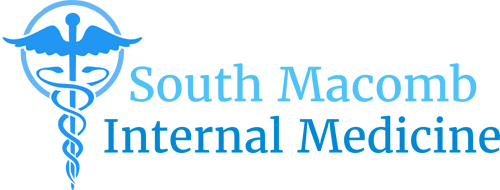High Blood Pressure
our doctors and medical team will help you from diagnosis to treatment
Hypertension is the term for a medical condition of the cardiovascular (heart and blood vessels) system that is often chronic in nature. High blood pressure (BP) is a symptom of hypertension. This occurs when the blood pressure has a measure of more than 140 (systolic) over 90 (diastolic). This means that more force than “normal” is required to keep your blood flowing. That additional force, or pressure, can cause damage to the walls of your blood vessels and to your body’s organs including the heart, kidneys and brain.
BP is measured in millimeters of mercury (mm Hg)– the top number (systolic) represents the pressure exerted while the heart is beating while the lower number reflects the pressure exerted inside the vessels when the heart rests between beats. BP that is greater than 120/80 mm Hg is considered to be above normal in most people.
BP can increase because of various factors including:
- Age
- Atherosclerosis – fat or cholesterol deposits that build up along the blood vessel lining forming plaques. As plaques grow larger they reduce blood flow in the vessels and more pressure is needed to keep your blood moving.
- Being overweight and obesity
- Chronic kidney disease
- Diet high in salt (sodium) and “bad” fats
- Drinking alcohol excessively
- Emotional stress or anxiety
- Family history
- High cholesterol
- Sedentary inactive lifestyle
- Sleep apnea
- Smoking and tobacco use
- Underlying diseases such as diabetes, cardiovascular disease and weakening or loss of blood vessel elasticity
There are also a number of pre-existing medical conditions that cause or are connected with high blood pressure. Often, in such cases the treatment for the high blood pressure is different than for primary high blood pressure.
Hypertension is the leading cause of serious conditions such as heart attacks, strokes, aneurysms, kidney damage, heart failure and even cognitive issues like Alzheimer’s disease.
TREATMENT
There are many approaches to treating high blood pressure. As with many conditions, a combination of lifestyle modifications and medical interventions may be combined to get the best results for you. During your well visit or checkup in our office we will perform the appropriate screening to make sure your treatment is optimal for your personal needs.
Our medical team with work with you to identify and recommend any appropriate lifestyle modification such as weight loss, dietary changes that include increasing fiber, limiting alcohol consumption and reducing sodium (salt) or increasing your physical activity.
Quitting smoking alone is very difficult. Having the necessary support of your doctor and/or medication can be the difference that helps you successfully and permanently quit. This is very important because, smoking and other tobacco use such as chewing, immediately raises your blood pressure temporarily. In addition, the chemicals in tobacco can damage the lining of your artery walls, which can cause your arteries to narrow, increasing your blood pressure. Secondhand smoke also increases blood pressure, so if you live with others quitting smoking will also help their blood pressure.
When lifestyle changes alone do not help lower blood pressure, there are medications that can be used effectively including:
- Diuretics (water pills) – There are several types of diuretics which remove excess water and sodium from your body. That decreases the amount of fluid flowing through your blood vessels, which reduces pressure on your vessel walls.
- Angiotensin-converting enzyme (ACE) inhibitors – ACE inhibitors help relax blood vessels by preventing the formation of angiotensin, a hormone in your body that narrows blood vessels.
- Angiotensin II receptor blockers (ARBs) – This type of medication works to relax blood vessels by blocking the action, rather than the formation, of angiotensin, a chemical in your body that narrows blood vessels.
- Calcium channel blockers – These medications function by preventing calcium from entering the heart and blood vessel muscle cells, which causes the cells to relax.
- Beta blockers – Beta-adrenergic blocking agents cause your heart to beat slower and with less force by blocking the effects of the hormone epinephrine, also known as adrenaline.
- Renin inhibitors – This type of medication inhibits the production of an enzyme called Renin, which is produced by your kidneys and is responsible for a chain of chemical processes in the body that increases blood pressure.
There are a number of other medications that may be used to lower high blood pressure and often our doctors use a combination of medications. Not all patients respond to the same blood pressure medication in the same ways.
TESTING AND PROCEDURES
We are able to do or arrange all of the necessary testing for high blood pressure right in our office. There are numerous possible tests for high blood pressure.
- Your doctor will take your blood pressure reading and will also consider other factors in your health profile when diagnosing high blood pressure. Your medical provider will take into account the fact that blood pressure can change throughout the day and can even be elevated during visits to the doctor (this is commonly called “white coat hypertension” and is a phenomenon seemingly associated with stress and anxiety about visiting the doctor).
- Ambulatory blood pressure monitoring is a 24-hour blood pressure monitoring test that may be used to confirm high blood pressure. The monitor consists of a blood pressure arm cuff attached by a flexible rubber tube to a light-weight monitor. The monitor sits in a pouch held by a waist belt or shoulder strap. This monitor remains on you for 24 hours and measures your blood pressure at regular intervals, usually every 20 minutes during the day and less often at night. Your blood pressure is measured and recorded while you are going about your everyday activities and during sleep. This provides an accurate picture of blood pressure changes over an average day and night.
- An electrocardiogram is a test that measures the heart’s electrical activity and is also called a 12-lead EKG or 12-lead ECG because it gathers information from 12 different areas of the heart. Typically, 10 electrodes are placed on the skin of the chest and limbs. The electrical activity is recorded as waves on a graph, with different patterns corresponding to each electrical phase of your heartbeat.
- An echocardiogram may also be used to check for signs of heart disease, which correlate with high blood pressure. A standard echocardiogram is an imaging technology that uses ultrasound to create images of your heart and used to examine and diagnose the heart and its blood supply, determine how large the heart is, how well it contracts, and how the valves function. An ultrasound probe is placed on your chest and high frequency sound waves are used to create images of the heart. Doppler technology can also be used to analyze the speed and direction of blood flow. The images are displayed on a monitor and are digitally recorded.
- Ambulatory Electrocardiogram, or Holter Monitor is a small, wearable device that records a continuous ECG, usually for 24 to 48 hours. Wires from electrodes on your chest go to a battery-operated recording device carried in a pocket or worn on a belt or shoulder strap. While one wears the monitor, one may go about normal activities, as long as the electrodes and device are kept dry. Your doctor may also ask you to keep a diary of what you’re doing when symptoms occur and the time in which they occur. The results of this type of monitor are usually sent digitally to a central service and shared with your doctor for evaluation.

